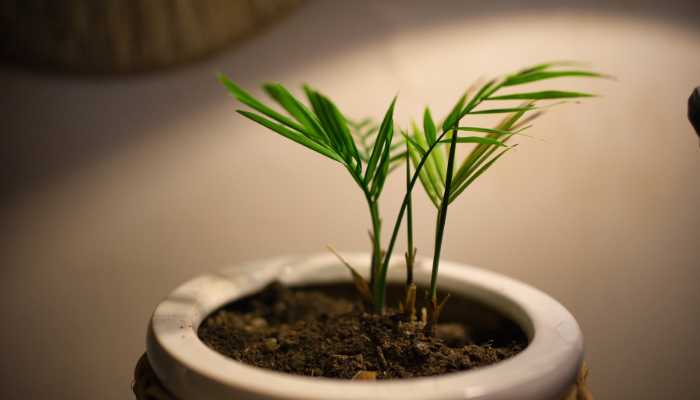Introduction
In this guide, we will learn in detail the art of growing and caring for areca palm plants. These plants, known for their beautiful leaves and air-purifying abilities, can thrive both indoors and outdoors alike.
Understanding their growth requirements and maintenance nuances is key to promoting healthy, vibrant areca palms in your area.
Areca Palm Plant Table of Contents
Define Areca Palm
Areca Palm, scientifically known as Dypsis lutescens or Chrysalidocarpus lutescens, is a species of palm native to Madagascar. It is widely cultivated for its ornamental value and is popularly used in interior landscaping due to its graceful appearance.
Relevance and Importance
Areca Palms are not only aesthetically pleasing but also contribute to indoor air quality by removing toxins like formaldehyde, benzene, and trichloroethylene. Their low maintenance needs make them ideal for both homes and offices, adding a touch of tropical elegance to any environment.

Types and Categories
Areca Palms can be categorized based on their size and growth patterns:
Dwarf Areca Palm
The Dwarf Areca Palm is a compact variety, perfect for smaller spaces or as a tabletop plant.
Golden Cane Palm
Also known as the Golden Areca Palm, this variety features vibrant yellow-green fronds, adding a pop of color to indoor settings.
Variegated Areca Palm
Characterized by variegated foliage with streaks of white or yellow, the Variegated Areca Palm is a visually striking choice.
Symptoms and Signs
Understanding the signs of a healthy Areca Palm versus a struggling one is crucial for proper care:
Healthy Signs
- Bright green, glossy fronds
- Firm, upright stems
- Regular growth of new fronds
Common Symptoms
- Yellowing or browning of frond tips
- Drooping or wilting fronds
- Pest infestations, such as spider mites or mealybugs

Causes and Risk Factors
Several factors can impact the health of Areca Palms:
Environmental Factors
- Inadequate sunlight or excessive direct sunlight
- Improper watering, leading to root rot or dehydration
- Low humidity levels, especially in heated indoor environments
Biological Factors
- Pest infestations, which can weaken the plant
- Over-fertilization causing nutrient imbalances
- Pot-bound roots restricting growth
Diagnosis and Tests
To diagnose Areca Palm issues, consider the following tests:
Soil Moisture Test
Insert a finger into the soil to check moisture levels. Ideally, the soil should be evenly moist but not waterlogged.
Light Assessment
Ensure the plant receives indirect, bright light. Too much direct sunlight can scorch the leaves.
Pest Inspection
Examine the plant for signs of pests like webbing, tiny insects, or sticky residue on leaves.
Image | Product Name | Review | Price |
Treatment Options
Addressing issues promptly is crucial for Areca Palm health:
Watering Adjustments
Maintain a consistent watering schedule, allowing the soil to partially dry between waterings. Use filtered or distilled water to prevent salt buildup.
Pruning and Trimming
Remove yellowing or damaged fronds regularly to promote new growth and maintain plant aesthetics.
Pest Control
Treat pest infestations with neem oil or insecticidal soap, ensuring thorough coverage of affected areas.
Preventive Measures
To prevent common Areca Palm problems:
Light Management
Place the plant in a location with bright, indirect light, avoiding exposure to drafts or extreme temperatures.
Humidity Regulation
Increase humidity levels by misting the plant or placing a humidifier nearby, especially in dry indoor environments.
Nutrient Balance
Use a balanced, water-soluble fertilizer formulated for palm plants during the growing season, following package instructions.
Read More
Personal Stories or Case Studies
Anna’s Areca Palm Journey
Anna, a plant enthusiast, shares her experience with nurturing Areca Palms in her apartment. Despite initial challenges, she found success with proper light, watering, and pest management practices.
Expert Insights
According to Dr. Botanist, a renowned plant expert, “Areca Palms thrive in well-draining soil, moderate humidity, and indirect sunlight. Regular monitoring and timely interventions are key to their long-term health.”
FAQs About Areca Palm plants:
How often should I water my Areca Palm?
Water your Areca Palm when the top inch of soil feels dry. This typically translates to watering every 1-2 weeks, depending on environmental conditions.
What type of soil is best for Areca Palms?
Use a well-draining potting mix specifically formulated for palm plants. Avoid heavy soils that retain excess moisture, which can lead to root rot.
Does Areca Palm require direct sunlight?
Areca Palms thrive in bright, indirect light. Direct sunlight can scorch their leaves, so it’s best to place them in a location with filtered sunlight or partial shade.
How do I fertilize my Areca Palm?
Use a balanced, water-soluble fertilizer designed for palm plants. Apply fertilizer during the growing season (spring and summer) every 2-3 months, following package instructions for dosage.
Are Areca Palms prone to pests?
Yes, Areca Palms can be susceptible to pests like spider mites, mealybugs, and scale insects. Regular inspection and prompt treatment with insecticidal soap or neem oil can help manage pest infestations.
Can I trim yellowing fronds from my Areca Palm?
Yes, it’s recommended to trim yellowing or damaged fronds from your Areca Palm to promote new growth and maintain plant health. Use clean, sharp pruning shears for best results.
How do I increase humidity for my Areca Palm?
Increase humidity by misting the plant regularly, placing a humidifier nearby, or placing a tray of water with pebbles under the pot (ensure the pot sits above the water to prevent root rot).
Can I propagate Areca Palms?
Yes, Areca Palms can be propagated through division or by planting seeds. Division involves separating offsets from the parent plant and planting them in separate pots with well-draining soil.
What temperature range is suitable for Areca Palms?
Areca Palms thrive in temperatures between 65-75°F (18-24°C) during the day and slightly cooler temperatures at night. Avoid exposing them to sudden temperature fluctuations or drafts.
How tall can Areca Palms grow?
Areca Palms can grow up to 6-7 feet indoors and even taller in outdoor ings with optimal growing conditions. Regular pruning can their height and promote bushier growth.
Areca Palm Plant Conclusion
Growing and caring for Areca Palm plants is a rewarding experience that brings a touch of nature indoors. By understanding their needs, diagnosing issues early, and implementing preventive measures, you can enjoy lush, vibrant Areca Palms in your home or office.




















